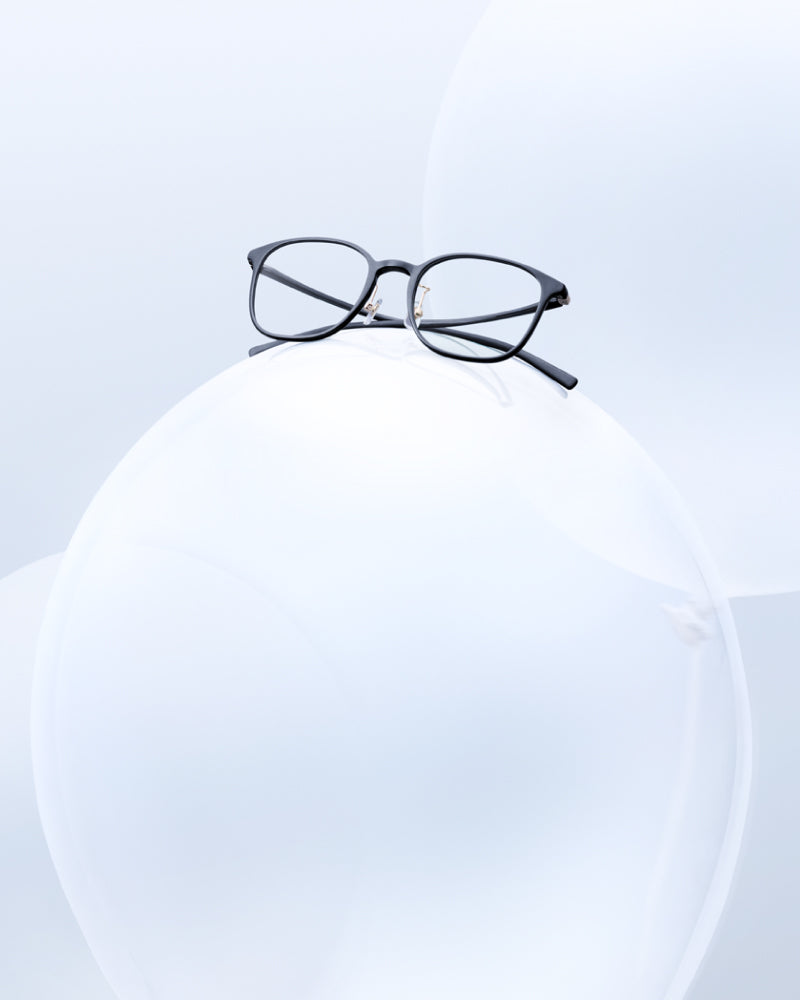In the past, if you needed a strong prescription to correct nearsightedness, farsightedness or astigmatism, you might have been limited to bulky, uncomfortable eyewear. Strong prescriptions typically meant thick lenses, which didn't fit well into slimmer, more stylish frames.
Today, high index lenses have changed all that. Regardless of prescription strength, high index lenses make it possible for anyone to have sleek, light, fashionable glasses. Let's take a closer look at the science behind high index lenses and what they mean for today's eyeglass wearers.
WHAT ARE HIGH INDEX LENSES?

High index lenses are special types of corrective lenses that have a higher refractive index than their conventional counterparts. But what does that mean? To understand what a high index lens is, it's helpful to know the basics of how corrective lenses work.
Faulty vision typically occurs due to a misalignment of the natural lenses in one or both of your eyes, which keeps your eye(s) from being able to focus an image on your retina, causing your vision to blur. Prescription eyewear corrects faulty vision by refracting, or bending, light as it moves through a manufactured lens, adjusting the focal point to compensate for the eye's misalignment so that you consistently see clear, sharp images.
High index plastic lenses typically fall between 1.59 and 1.74 on the index as opposed to standard lenses, which have a refractive index of approximately 1.50. For traditional glass lenses, the refractive index is about 1.53. In less technical terms, this means that high index lenses are better at bending light rays for vision correction.
As a general rule of thumb, the higher a lens's refractive ability is, the less material is needed to achieve a particular prescription strength. That means that lenses with a higher refraction index can be slimmer and lighter, which is why the superior light-bending abilities of high index lenses make them ideal for eyeglass wearers who require a stronger prescription to correct their vision.
HOW DO HIGH INDEX LENSES DIFFER FROM STANDARD LENSES?
Standard lenses and high index lenses accomplish the same task: correcting your vision. However, because high index lenses require less material to create the prescription strength, they're slimmer than standard lenses, especially at the edges.
Although individuals with slight corrective prescriptions may not notice much of a difference, anyone with a strong prescription should find high index lenses to be thinner, lighter and, consequently, better able to fit into a wide variety of frame styles.
ARE HIGH INDEX LENSES WORTH IT?
Before deciding if high index lenses are worth purchasing, it's helpful to understand their pros and cons, which can differ depending on your unique prescription.
The Advantages of High Index Lenses
The advantages of high index lenses lie primarily in their lightweight design, which is beneficial for a variety of reasons.
1. Flexibility
Thanks to their slim shape and narrow edges, high index lenses offer wearers the flexibility to choose from a wide array of fashion-forward frames. Their size means that they can be easily paired with sleek metal frames or incorporated into rimless eyewear for an attractive barely-there look, and that they won't stick out from behind more streamlined frames.
2. Comfort
Because they're lighter than their traditional counterparts, high index lenses are more comfortable for extended use. Their lightweight design also means you won't be constantly readjusting them due to sliding — and they're easier on your nose and ears, as well.
3. Choices
High index thin lenses are available with many of the same options as traditional lenses; they can be either single-vision or progressive. Progressive lenses provide multifocal usage, combining up to three separate prescriptions for reading, distance and midrange in one pair of eyeglasses.
Photochromic high index lenses (known to some eyeglass wearers as light-adaptive or variable-tint lenses) are also available. This versatile type of corrective lens is designed to be clear when worn indoors and will transition to a darker shade when worn outside.
4. Aesthetics
For users with strong prescriptions, high index lenses mean no bulky, bottle-glass appearance. This can reduce the unwanted bug-eye look traditionally associated with very thick lenses.
The Disadvantages of High Index Lenses
Although there are numerous benefits to high index lenses, there are also several potential disadvantages that should be taken into consideration prior to purchase.
1. Cost
High index lenses are made from a chemical synthetic blend that's created through a special manufacturing process. Exceptional craftsmanship is then required to cut them. Because of this, high index lenses typically cost significantly more than standard lenses — in fact, the price may be more than double that of their traditional counterparts. For many wearers, this can make the cost of eyewear prohibitive. At JINS, we offer high index lenses of 1.60 to 1.74 free of charge (availability varies).
2. Durability
High index lenses can be more brittle than their traditional counterparts and may also be more prone to scrapes and scratches. This can impact their overall durability and longevity and may mean they need to be replaced more often. As such, they may be less than ideal for children or wearers who tend to be rough with their glasses.
3. Reflectivity
High index lenses are typically more reflective than standard lenses, which can make them less effective for brightly lit work environments, outdoor use and nighttime driving on busy highways. An anti-glare coating is strongly recommended and can make them more viable in certain highly reflective situations.
4. Distortion
High index lenses have a higher Abbe value than prescriptions made from standard plastic or glass, which means that there's a greater potential for distortion, particularly in your peripheral vision. Often, this same distortion won't happen with standard lenses of the same prescription strength.
The Verdict on High Index Lenses

Whether high index lenses are worth it is a personal decision that may depend in large part on your prescription. Eyeglass wearers who have mild to moderate prescriptions may not find the minor reduction in thickness and weight worth the additional cost, but individuals with strong prescriptions may find the aesthetic benefits and increased comfort to be well-worth paying more for. If you have a strong prescription, we recommend checking out these glasses.
ARE HIGH INDEX LENSES WORTH IT FOR SUNGLASSES?
High index lenses can also be tinted for use in sunglasses, and their slim design and sleek edges add sophistication to your outdoor eyewear. However, when it comes to ordering a second pair of glasses, many eyeglass wearers may consider the higher cost of high index lenses a luxury rather than a necessity.
There are pros and cons to incorporating high index lenses into your outdoor eyewear, as well. If you're wondering whether high index lenses are worth it for sunglasses, you may want to consider the following factors.
The Advantages of Choosing High Index Lenses for Your Sunglasses
In addition to their streamlined look, lightweight comfort and flexibility, there are several other upsides to using high index lenses in your sunglasses.
1. Fashion Tints
High index lenses can be tinted in traditional hues such as gray, green and brown to safeguard your eyes from the sun. If you're after a custom look, however, these lenses can also be tinted in fashion colors such as pink, yellow, blue and orange to match the frames of your choice.
2. Mirror Coatings
Mirror coatings are available for wearers who like the unique style and additional UV protection of this reflective look. When combined with a traditional tint, this special optical coating can reduce the amount of light that enters through the lenses by as much as 60%.
The Disadvantages of Choosing High Index Lenses for Your Sunglasses
There are also several downsides to consider before opting for high index lenses in your outdoor eyewear.
1. Durability
Because high index lenses may be more prone to scratches than standard corrective lenses, they may not be an ideal choice for avid beachgoers or other folks spending time on rugged outdoor activities that may easily damage eyewear.
2. Safety
High index lenses can be brittle, which makes safety a consideration for active users. Because they're more easily broken, high index lenses are not as safe as polycarbonate or trivex lenses, making them less than ideal for individuals who plan on working out or playing a sport while outdoors.
The choice between standard lenses and slimmer high index options is ultimately a personal one and may depend on a variety of aesthetic and functional considerations. If you're still on the fence about what to choose, your optometrist can schedule a comprehensive eye exam and consultation to help you make an informed decision about whether high index lenses are right for your lifestyle.
Explore our eyewear collections at JINS to find a frame style that suits your tastes and style, and consider having them created with high index lenses. We offer high-index thin lenses between 1.60 and 1.74, at no additional charge (availability varies). If you’re ready to start looking for your next pair, browse frames recommended for strong prescriptions.


















